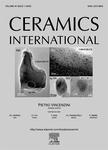版权所有:内蒙古大学图书馆 技术提供:维普资讯• 智图
内蒙古自治区呼和浩特市赛罕区大学西街235号 邮编: 010021

作者机构:Department of Civil and Environmental Engineering University of California Los Angeles United States School of Materials Science and Engineering State Key Laboratory of Advanced Processing and Recycling of Non-ferrous Metals Lanzhou University of Technology Lanzhou730050 China
出 版 物:《Ceramics International》 (Ceram Int)
年 卷 期:2025年第51卷第16期
页 面:21689-21701页
核心收录:
学科分类:0808[工学-电气工程] 0809[工学-电子科学与技术(可授工学、理学学位)] 0817[工学-化学工程与技术] 08[工学] 070203[理学-原子与分子物理] 0805[工学-材料科学与工程(可授工学、理学学位)] 080502[工学-材料学] 0703[理学-化学] 0702[理学-物理学] 0801[工学-力学(可授工学、理学学位)]
基 金:We acknowledge the financial support from the National Natural Science Foundation of China (Grant No. 51765038 ) the National Natural Science Foundation of China (Grant No. 61866021 ). The authors are also grateful to the Faculty Research Grant of the Academic Senate of University of California Los Angeles ( UCLA ) under fund number 4-592565-19914 (PI: Prof. J.W. Ju) for the financial support
摘 要:We report a top-down electrical explosion approach in a constraint tube under an argon atmosphere for high-yield production of few-to multi-layer graphene. By coupling high-voltage discharges with inert gas support, this technique imparts intense shock loading that surmounts the interlayer van der Waals forces in graphite. Systematic experimental analyses (FE-SEM, TEM/HRTEM, AFM, Raman) confirm efficient exfoliation into largely few-layer graphene with minimal defects and residual graphite. To elucidate the atomistic mechanisms, large-scale molecular dynamics (MD) simulations replicate key stages of the process—annealing, shock-induced delamination, and cooling—revealing how shock loading and argon interactions drive interlayer expansion, bending, and partial delamination. Notably, argon significantly mitigates re-agglomeration during the cooling stage, preserving dispersed graphene flakes. This synergy between experiment and simulation establishes electrical explosion in an argon-rich environment as a scalable method potentially suitable for commercial graphene production. Moreover, it highlights the crucial role of controlled shock conditions and argon gas interactions in enabling robust, few-layer exfoliation, paving the way for further optimization and industrial implementation. © 2025 Elsevier Ltd and Techna Group S.r.l.